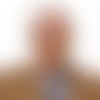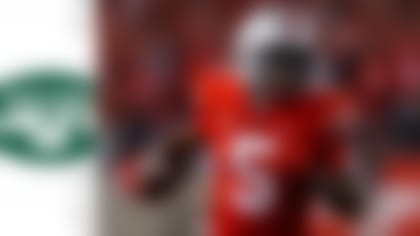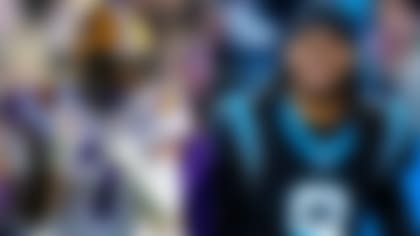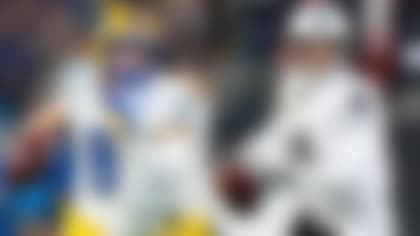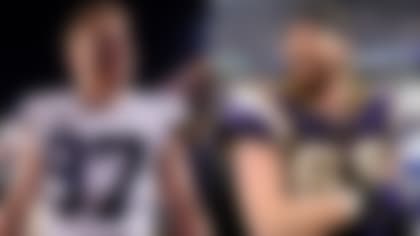Drafting quarterbacks is hard.
Since 2002, 54 quarterbacks have been drafted in the first round. Setting aside the six QBs who can't yet be fairly judged, we can say that 11 either look or turned out to be very good, nine look or turned out to be good but not great and 28 turned out to be not very good. That's a hit rate of less than 50 percent.
Before we attempt to suss out which quarterbacks in the 2020 draft class have the best chances of succeeding in the NFL, let's break down the most important traits for a prospect to have.
1) Accuracy.
1A) Leadership.
2) Ball placement. (Being able to anticipate and throw to the spot where the receiver is headed.)
3) Ability to command the huddle.
4) Ability to play with your mind, feet and arm.
Now, let's dig into the pro comparisons for my top seven QB prospects:
Pro comparison: Andy Dalton (62 percent completion rate, 204:118 TD-to-INT ratio, 7.1 yards per attempt, 237.5 yards per game, 87.5 passer rating, 2011-19).
Burrow made as much progress in one year as any player that I can ever remember. From 2018 (Burrow's first year at LSU after transferring from Ohio State) to 2019, his passing numbers ballooned by cartoonish proportions: he bumped his completion rate up by 18.5 percentage points (57.8 to 76.3), nearly doubled his yardage total (2,894 to 5,671) and threw a jaw-dropping 44 more touchdown passes (16 to 60) -- I've never seen anyone improve as dramatically as that. One thing that could help explain the leap in performance is an increase in arm strength stemming from the development of his upper body in the gym. Yes, he had a supremely talented team around him last season, but the Heisman Trophy winner is not a one-year wonder. I like his composure -- think of how he drove LSU down the field to beat Auburn in the last moments of their 2018 matchup -- and decision-making ability, and he should be a long-term starting quarterback in the NFL capable of making regular playoff appearances.
The comparison to Dalton might seem ironic, given that Bengals fans are likely hoping their team will use the No. 1 overall pick in the draft to land someone who is an upgrade over Dalton, who held down the quarterback position in Cincinnati for the past nine seasons. The thing is, while I understand that people are down on Dalton, I don't think he's that bad myself -- we can say what we want about him, but he did help the Bengals reach the playoffs in five consecutive seasons. When I look at Burrow and Dalton, I see similar physical ability, arm strength (where I also see a similarity between Burrow and Peyton Manning) and intelligence, with Burrow possessing an advantage in overall ability. And I think it's useful to think of Burrow as a souped-up version of Dalton, with the upside to be much more, especially if Cincinnati surrounds Burrow with more talent than Dalton had to work with in recent years.
Pro comparison: Carson Palmer (62.5 percent completion rate, 294:187 TD-to-INT ratio, 7.3 yards per attempt, 254.1 yards per game, 87.9 passer rating, 2003-2017).
For a sense of what makes Herbert special, check out Oregon's game against Cal in 2016, when Herbert threw five post-halftime touchdowns and brought the Ducks back from a three-touchdown deficit to almost win at Cal. Or consider that he took a team that won four games in 2016 to 12 wins, including a Rose Bowl victory, last season. Yes, he played poorly in an upset loss to Arizona State that helped knock Oregon out of the College Football Playoff chase. But I liked that Herbert took on the challenge of playing in the Senior Bowl this offseason, where he had to call plays and take snaps under center for the first time, and captured the game's MVP award. I also liked that he did a complete workout at the NFL Scouting Combine, including the throwing portion, where he showed off the wow factor that can be a part of his game, as on one bomb down the left side of the field that went roughly 50 yards.
I see Herbert as possessing a similar body type and makeup as Palmer, the former No. 1 overall pick who ended up putting together a very respectable NFL career, earning three Pro Bowl nods and reaching the playoffs three times. Herbert was not heavily recruited out of high school and does not have an outgoing personality. But he's a very talented player who is going to be very good -- in fact, if an offensive coaching guru were to get ahold of him, I think he could turn out to be very special.
Pro comparison: Drew Brees (67.6 percent completion rate, 547:237 TD-to-INT ratio, 7.6 yards per attempt, 281.5 yards per game, 98.4 passer rating, 2001-2019).
Tagovailoa has provided ample evidence he can play well against top competition -- think of how he brought Alabama back from a 20-point deficit to nearly beat LSU in one of his last college appearances. He does not have to set his feet to throw deep, and he is very good at executing run-pass option (RPO) plays. While it's true that most of is interceptions came when he had to read coverages, the biggest question surrounding Tagovailoa is related to his health, given that he's undergone surgery on both ankles and to correct the dislocated hip that ended his 2019 season in November. He appears to be trending in the right direction thus far, but will he be able to put these durability issues behind him long-term?
In terms of size, movement and athletic ability, Tagovailoa looks like a left-handed Brees, who developed into one of the best quarterbacks of his generation. Neither player is going to wow you throwing the ball down the field on home-run heaves, but both Brees and Tagovailoa are very accurate. If Tagovailoa is able to stay healthy, he'll be a very good NFL quarterback.
Pro comparison: Jay Cutler (62 percent completion rate, 227:160 TD-to-INT ratio, 7.1 yards per attempt, 229.6 yards per game, 85.3 passer rating, 2006-2017).
Love's production dipped from 2018 to '19, but that could partially be explained by the fact that a new coaching staff came on at Utah State ahead of last season, and there was only one returning starter for Love to work with from the previous year. He has a strong skill set, including very impressive arm talent, and I like that he wanted to show what he was capable of by doing a complete workout at the combine. That said, with just one exceptionally strong season on his ledger, Love remains something of an unproven entity. (His citation for marijuana possession last year raises questions, as well, though it should be noted that the case was subsequently dismissed.) He's a high-risk, high-reward type of player.
Hence the comparison to Cutler, who might have received more exposure at Vanderbilt than Love did at Utah State, but who also entered the NFL needing to prove himself. And it wouldn't surprise me if, as the Broncos did in 2006 to snag Cutler, some team moved up in the 2020 NFL Draft to grab Love. I don't think Love will play in 2020 unless necessary, but I could see a team like, say, New England being drawn to him as an appealing developmental project.
Pro comparison: Colt McCoy (as starter: 60.5 percent completion rate, 25:27 TD-to-INT ratio, 6.5 yards per attempt, 202.8 yards per game, 76.3 passer rating, 2010-19).
Fromm has very good accuracy; if he'd been working with receivers who dropped fewer passes, I think his completion rate (63.3%) would have been more around 67 or 68. He has just average arm strength and is not a great athlete -- his big selling points are his mental traits and anticipation. He also has very good play-action passing ability. I worry about how his hand size (8 7/8 inches) would impact him in an open stadium where wind and cold could be a factor, like in Cleveland or New England.
Fromm projects as a potential NFL starter, but I'm not sure he'll be able to take a team to the playoffs, unless the rest of the roster is already strong. He has to go to the right situation. I'm not sure how many games you're going to win because of him. But then, I don't think he'll lose you games, either. The same could be said of McCoy, who remains in the league despite his limitations because everybody is looking for the kind of quarterback who can step in and keep a season on track if needed. At worst, Fromm should be a strong backup QB.
Pro comparison: Jacoby Brissett (59.9 percent completion rate, 31:13 TD-to-INT ratio, 6.6 yards per attempt, 169.5 yards per game, 84.6 passer rating, 2016-19).
Hurts' 40 time (4.59 seconds), vertical jump (35 inches) and broad jump (10-foot-5) are an indication of his athletic ability and strength. He has running ability, having logged 3,274 yards and 43 scores on the ground in his college career (with a yards-per-carry mark of 5.3). He proved to be a much better passer after transferring to Oklahoma than he appeared to be at Alabama from 2016 to '18; I think Sooners coach Lincoln Riley helped Hurts improve significantly as a quarterback prospect. Hurts also worked out much better at the combine than many people expected. He lacks anticipation as a passer and he might not be the best decision-maker, which is a bit worrisome, but he's got good arm strength. Riley swears by him.
Brissett's toughness is what made Bill Parcells like him so much; Parcells really thought Brissett was going to be something special. Similarly, Hurts' mental toughness stands out. I think Hurts could develop into a strong starter, and I would love to have him on my roster and have the chance to maximize his talents.
Pro comparison: Joe Flacco (61.9 percent completion rate, 218:141 TD-to-INT ratio, 6.8 yards per attempt, 234.3 yards per game, 84.1 passer rating, 2008-2019).
Eason started school at Georgia as a hyped prospect -- he was supposed to be one of the best high school players in the country -- but left after two years, returning home to Washington, where he put up a 23:8 TD-to-INT ratio in 2019. He has a strong arm and can put plenty of velocity on the ball, and he can throw the ball into tight windows. (He must like football, because Eason probably could have been a pitching prospect in baseball.) He also shows patience. However, he lacks anticipation and mobility.
Eason's arm talent is his redeeming trait; I'm not sure he can ever be a winning starting QB in the NFL. The high end of what you would hope to see out of him is what Flacco turned out to be, though Flacco was a much better athlete coming out of college. Like Flacco, Eason could probably win for you if he were on a really good team -- but I don't think he's the kind of guy who can carry you by himself.
Follow Gil Brandt on Twitter _@GilBrandt_.
